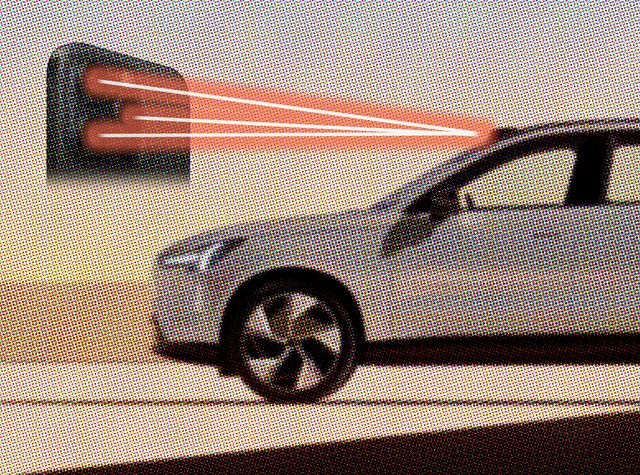
Lidar Alert: Volvo EX90 Sensors Can Fry Your Phone Camera – Here’s What You Need to Know
A viral video is making waves in the tech world, revealing a surprising vulnerability in modern smartphone cameras. Turns out, the lidar sensors found on advanced vehicles like the Volvo EX90 can potentially damage your phone's camera. But how does this happen, and what can you do to protect your device?
The story began on Reddit, where a user shared a video demonstrating the effect of pointing a phone camera at a lidar sensor. As the camera zoomed in on the sensor atop the Volvo EX90, a burst of colorful dots appeared, essentially burning damage into the camera's sensor. This isn't just a lens flare; it's real, physical damage.

Lidar, short for Light Detection and Ranging, is a technology used by automakers to enable self-driving features. It works by emitting pulses of laser light to measure the distance to surrounding objects, creating a 3D map of the vehicle’s environment. While these lasers are typically harmless to the human eye, they can be detrimental to the delicate sensors inside your smartphone camera, especially when using the telephoto lens.
Modern smartphones use multiple camera modules with different lenses to achieve various focal lengths. When you zoom in, the phone often switches to the telephoto lens. These lenses have a focused optical path and smaller apertures, making them ideal for long-distance shots but also more vulnerable to laser damage. The video clearly showcased this, with damage appearing only when the telephoto lens was engaged.
As Car and Driver points out, lidar system manufacturers are aware of potential damage and design them within Class 1 laser safety limits. However, these limits are based on human eye exposure, not repeated exposure to digital sensors. Volvo even warns about lidar damage in its owner's manual.
So, how can you avoid damaging your phone camera? The key is to be cautious when filming vehicles equipped with lidar. According to Volvo, it's generally advised to avoid pointing a camera directly at a lidar sensor. If you must, avoid zooming in, especially in bright sunlight when lidar operates at higher intensity. As The Drive notes, using filters or protective covers on the camera lens can help reduce the impact of lidar exposure.
The good news is that the risk is relatively low for most users. Backup cameras, for example, typically use ultra-wide-angle lenses that are less susceptible to damage. Also, the specific lidar implementation isn't tied to Volvo. However, the best practice is to be aware of the issue and take precautions when around these sensors.
This incident raises an interesting question: as technology advances and more cars are equipped with lidar, will this become a more common issue? What other hidden vulnerabilities might emerge as our devices interact more with advanced automotive technology? Share your thoughts and experiences in the comments below.